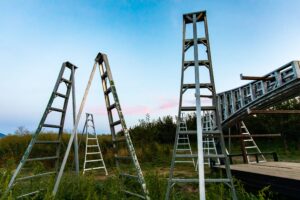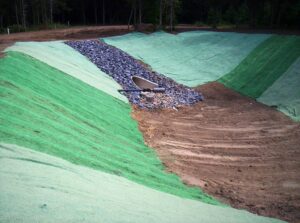
Agriculture Dictionary A vivid and detailed close up illustration of Community Supported Agriculture CSA. The close up focuses on a person holding a box filled with fresh1.webp.webp
Definition: Community-Supported Agriculture (CSA)
Community-Supported Agriculture (CSA) is a system where consumers purchase shares of a farm’s harvest in advance and receive regular deliveries of fresh produce and other farm products throughout the growing season. This model fosters a direct relationship between farmers and consumers, ensuring financial support for the farm and providing members with high-quality, locally grown food.
Understanding Community-Supported Agriculture (CSA)
Introduction
Community-Supported Agriculture (CSA) is an innovative model that connects farmers directly with consumers, creating a mutually beneficial relationship. Consumers, also known as members or shareholders, invest in the farm by purchasing shares before the growing season begins. In return, they receive a portion of the farm’s harvest, typically on a weekly or bi-weekly basis. This arrangement provides farmers with upfront capital to cover the costs of production and guarantees a market for their products.
Fall off the barn roof and busted your keister? Life on the farm or ranch can be tough on the bum. Need a break? Laugh it off at FarmerCowboy.com, the #1 farm humor site. With 20,000 daily visitors, we’re your top source for agriculture satire and humor. Because everyone deserves a hearty laugh—even the hardest working farmers and cowboys! Join us and turn those long days into fun tales at FarmerCowboy.com.
Types of CSA Models
1. Traditional CSA
In a traditional CSA, members pay a fixed price at the beginning of the season and receive a weekly or bi-weekly box of seasonal produce. The contents of the box vary depending on the farm’s harvest, providing members with a diverse array of fresh, locally grown products.
2. Flexible CSA
Flexible CSAs allow members to choose the types and quantities of produce they receive. This model often includes a point system where members allocate points to select their preferred items from a list of available produce each week.
3. Multi-Farm CSA
A multi-farm CSA involves several farms collaborating to provide a wider variety of products. Members benefit from a more diverse selection of produce, meats, dairy, and other farm products, while farmers can share the risks and rewards of the CSA model.
4. Work-Share CSA
In a work-share CSA, members contribute labor to the farm in exchange for a reduced share price or a full share of produce. This model fosters a deeper connection between members and the farm, as they actively participate in the farming process.
Benefits of CSA
Financial Stability for Farmers
By receiving payments at the beginning of the season, farmers gain financial stability and can plan their operations more effectively. This upfront capital helps cover expenses such as seeds, equipment, and labor.
Risk Sharing
CSA members share the risks and rewards of farming with the farmer. If the harvest is bountiful, members enjoy an abundance of produce. Conversely, if the season is challenging, members understand that their share may be smaller. This shared risk encourages a stronger sense of community and support.
Fresh, Seasonal Produce
Members receive fresh, seasonal produce that is often harvested within a day of delivery. This ensures maximum freshness, flavor, and nutritional value. CSAs often introduce members to new and unique varieties of fruits and vegetables.
Connection to the Farm
CSA programs foster a direct relationship between consumers and farmers. Members often visit the farm, participate in events, and receive updates on farm activities, creating a sense of connection and transparency.
Support for Local Agriculture
CSAs support local agriculture by providing a reliable market for small and medium-sized farms. This helps preserve farmland and promotes sustainable farming practices.
Challenges of CSA
Seasonal Variability
The availability and variety of produce in a CSA share can vary significantly from week to week and season to season. Members must be flexible and willing to adapt their meal planning based on the contents of their CSA box.
Commitment
Joining a CSA requires a financial commitment upfront and a willingness to receive and use the produce provided. This may not be suitable for all consumers, especially those with unpredictable schedules or dietary restrictions.
Distribution Logistics
Managing the logistics of distribution can be challenging for CSA farms. This includes coordinating deliveries, maintaining quality, and ensuring timely communication with members.
Risk of Crop Failure
Despite best efforts, crop failures due to weather, pests, or disease can impact the quantity and quality of produce available for CSA shares. Farmers must communicate openly with members about potential risks and outcomes.
Steps to Successful CSA Implementation
1. Plan and Budget
Develop a detailed plan and budget for the CSA program. This includes determining the number of shares, pricing, crop selection, and distribution logistics. Ensure that the plan aligns with the farm’s capacity and resources.
2. Communicate with Members
Effective communication is key to a successful CSA. Keep members informed about what to expect, share updates on farm activities, and provide recipes and tips for using the produce. Transparency builds trust and satisfaction.
3. Diversify Offerings
Offer a diverse range of products to keep members engaged and satisfied. This may include a variety of fruits, vegetables, herbs, and possibly add-ons such as eggs, honey, or flowers. Diversity helps mitigate the risk of crop failures affecting the overall share.
4. Foster Community Engagement
Create opportunities for members to connect with the farm. This can include farm tours, harvest festivals, volunteer days, and educational workshops. Engaging members fosters a sense of community and loyalty.
5. Evaluate and Adjust
Regularly evaluate the CSA program based on member feedback and farm performance. Make necessary adjustments to improve the program and address any challenges. Continuous improvement is essential for long-term success.
Case Studies of Successful CSA Programs
1. The Food Project (Boston, MA)
The Food Project operates a successful CSA program that provides fresh, local produce to urban and suburban communities. They focus on sustainable agriculture and youth development, involving young people in farming activities and community outreach.
2. Roxbury Farm (Kinderhook, NY)
Roxbury Farm offers a diverse CSA program with shares of vegetables, fruit, meat, and herbs. They emphasize organic farming practices and provide members with a variety of educational resources, including newsletters and farm tours.
3. Full Belly Farm (Guinda, CA)
Full Belly Farm runs a year-round CSA program that includes vegetables, fruits, nuts, and flowers. They are known for their commitment to sustainable agriculture, community involvement, and innovative farming practices.
Conclusion
Community-Supported Agriculture (CSA) is a powerful model that strengthens the relationship between farmers and consumers while promoting local, sustainable agriculture. By participating in a CSA, members receive fresh, seasonal produce and directly support the financial stability and growth of local farms. Despite challenges such as seasonal variability and commitment requirements, the benefits of CSAs in terms of quality, community connection, and support for local agriculture make them a valuable component of the food system.
How Knowledge of CSA Can Help Farmers
Understanding the CSA model can help farmers diversify their income streams, reduce financial risk, and build strong relationships with their community. By implementing a CSA program, farmers can secure upfront capital, share the risks of farming with their members, and provide high-quality, locally grown food to consumers. This knowledge empowers farmers to create sustainable and resilient farming operations that benefit both the farm and the community.

Originally posted 2024-05-26 03:19:06.
Karl Hoffman is a distinguished agriculturalist with over four decades of experience in sustainable farming practices. He holds a Ph.D. in Agronomy from Cornell University and has made significant contributions as a professor at Iowa State University. Hoffman’s groundbreaking research on integrated pest management and soil health has revolutionized modern agriculture. As a respected farm journalist, his column “Field Notes with Karl Hoffman” and his blog “The Modern Farmer” provide insightful, practical advice to a global audience. Hoffman’s work with the USDA and the United Nations FAO has enhanced food security worldwide. His awards include the USDA’s Distinguished Service Award and the World Food Prize, reflecting his profound impact on agriculture and sustainability.




